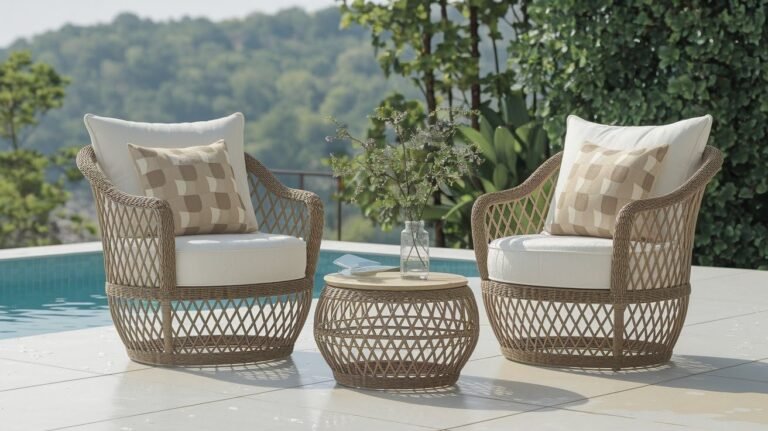Worried about your wicker furniture getting wet? You’re not alone. After helping hundreds of homeowners protect their outdoor furniture over the past decade, I’ve seen the same questions come up repeatedly.
This guide solves your water damage concerns with practical advice you can trust. As a furniture restoration specialist who has repaired countless pieces damaged by moisture, I understand exactly what works and what doesn’t.
You’ll learn about different wicker materials, real damage risks, and proven protection methods. I’ll share step-by-step care instructions based on my hands-on experience, not marketing claims. Your furniture deserves proper care. Let’s make sure it lasts.
Natural vs Synthetic Wicker Water Resistance
Natural wicker (rattan, bamboo, willow, reed) absorbs moisture naturally and gets damaged by outdoor elements, so keep it indoors or under cover.
1. Natural Wicker Characteristics
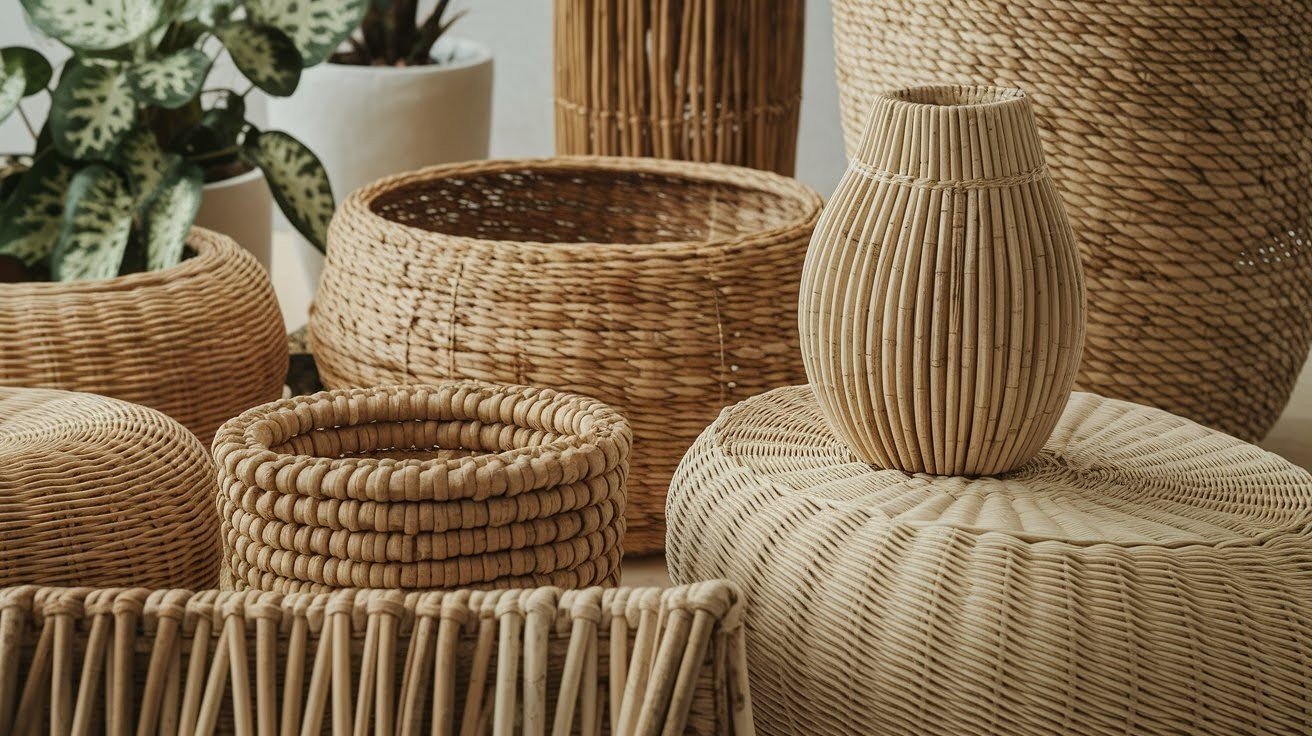
Let me tell you about natural wicker materials. I work with four main types: rattan, bamboo, willow, and reed. Each one comes from a living plant. That’s what makes them beautiful. It’s also what makes them vulnerable.
These fibers are hygroscopic. Big word, simple meaning: they absorb moisture from the air. They can’t help it. It’s built into their structure. Even rattan surprises people. It has natural oils that seem like they’d protect it. They don’t do enough. I’ve seen rattan pieces fail just like the others.
The elements are too harsh. Sun, rain, wind, and humidity team up against natural fibers. They always win eventually. My recommendation is simple: Keep natural wicker indoors or under a solid roof. No exceptions.
2. Synthetic Wicker Properties
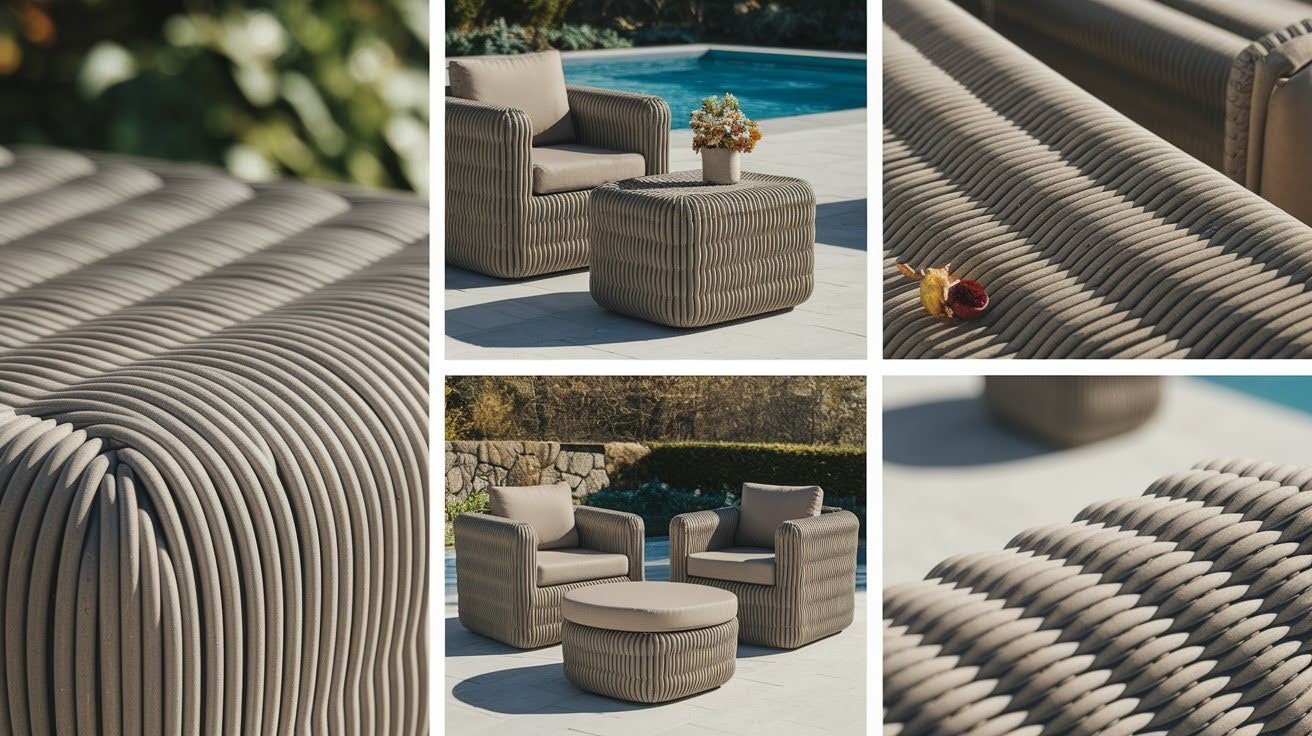
Manmade materials solve the water problem. I use high-density polyethylene (HDPE) resin and polyphenylene ether in my projects. These materials are engineered to handle what nature throws at them. Water resistance is built in from the start.
UV rays can’t fade quality synthetic wicker. The colors stay true year after year. Even poolside chlorine doesn’t hurt it. Here’s what I tell customers: With basic care, expect 10 years of good use. Sometimes longer.
But here’s the thing, it doesn’t look exactly like natural wicker. Some people care about that difference. Others don’t.
3. Comparative Analysis
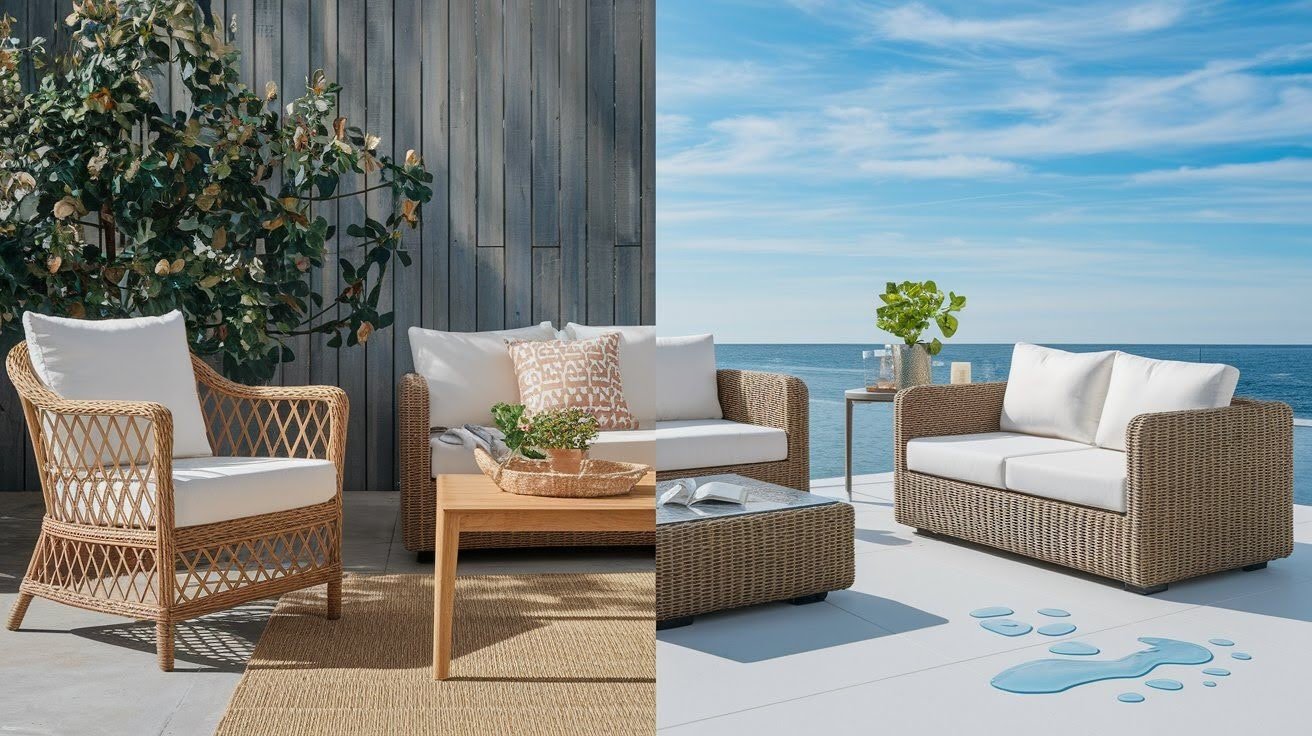
Let me break down the real differences you need to know. Natural wicker offers poor to fair water resistance, while synthetic provides excellent protection. Maintenance requirements differ dramatically natural wicker needs regular treatments, while synthetic only requires basic cleaning.
The lifespan difference is shocking. Natural wicker lasts 24 years outdoors. Synthetic can go 10+ years with proper care. Initial cost favors natural materials, but synthetic materials offer excellent long-term value. The numbers don’t lie. Synthetic wins on almost every practical measure.
Environmental impact is complicated. Natural materials break down naturally, but you’ll buy more of them over time. Synthetic lasts longer but doesn’t decompose. Weight matters if you move furniture often natural wicker wins here. Synthetic pieces stay put better in windy conditions, though.
Your choice depends on what matters most to you: looks or performance. Cost-wise, synthetic pays for itself through longer life and less maintenance. Natural wicker seems cheaper until you factor in replacements. Think about your specific needs before deciding.
Factors Affecting Water Resistance in Wicker Furniture
Material quality varies greatly. Natural wicker depends on fiber density and oil content, while synthetic materials are engineered with built-in weather resistance.
1. Material Composition Impact

The raw materials make all the difference. Natural fiber density varies wildly between pieces. Some rattan is tight and dense. Other pieces feel loose and spongy.
Oil content in rattan affects everything. Higher oil content means better natural protection. But you can’t tell oil levels just by looking. I’ve seen expensive rattan fail faster than cheap alternatives.
Synthetic materials are engineered for weather resistance. They don’t leave protection to chance. The materials start weather-ready from day one. Manufacturing quality varies tremendously, though. You get what you pay for.
Chemical treatments happen during production. Natural fibers get preservatives and water repellents that wear off over time. Synthetic materials include UV stabilizers mixed right into the material itself.
2. Construction Techniques
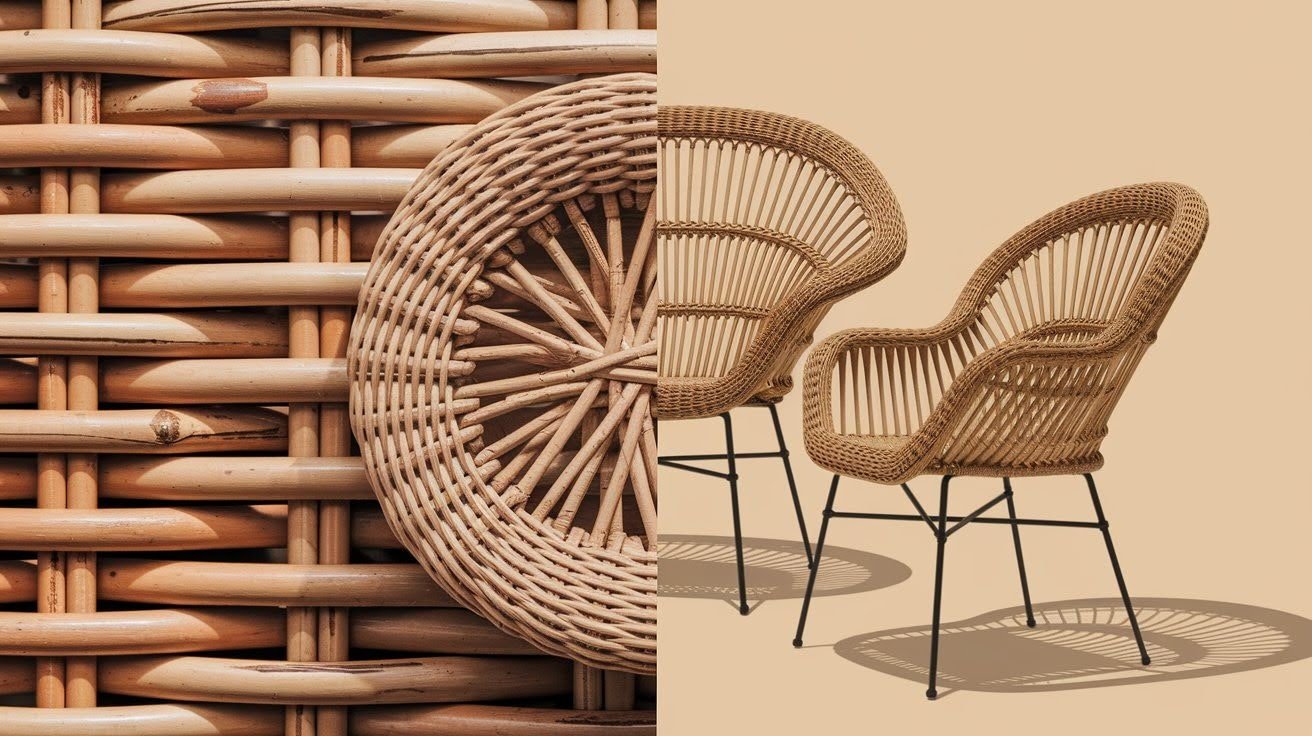
How tightly the wicker is woven matters more than most people think. Loose weaving creates gaps where water collects. Tight weaving sheds water better and lasts longer.
Metal frame reinforcement changes everything in synthetic furniture. The frame bears the weight while wicker provides the look. Natural wicker relies on the fibers themselves for structural support. That’s why it fails faster.
UV-resistant dye application happens during manufacturing. Quality manufacturers apply fade-resistant dyes. Cheap manufacturers skip this step. Your furniture shows the difference within months.
3. Finishing and Protective Coatings
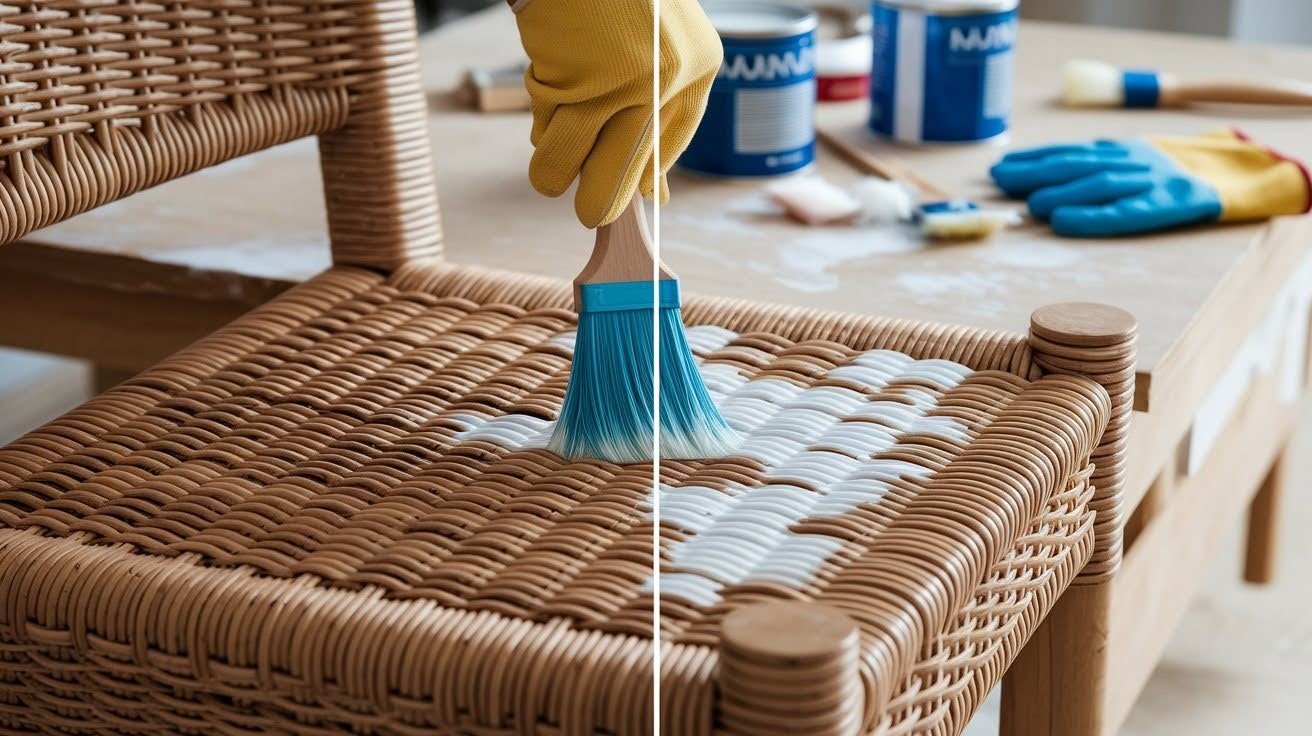
Marine varnish works best for outdoor protection. I recommend 23 coats for maximum protection. The first coat soaks in. The second and third coats create the actual barrier.
Application technique matters as much as the product. You need varnish in every crack and crevice. Miss a spot, and water will find it. Waterproof coatings vary in effectiveness. Test a small area first.
Reapplication isn’t optional. Plan on reapplying for protection every 23 years. Mark it on your calendar. Waiting too long means starting over with damaged furniture.
Paint works as a protective barrier, too. It seals fibers and adds moisture protection. But paint changes the look completely. Some people love it. Others hate losing the natural appearance.
Wicker Water Resistance Tips
Natural Wicker Protection:
- Keep natural wicker indoors or under solid roof coverage at all times
- Apply marine varnish in 23 coats, ensuring coverage in every crack and crevice
- Reapply protective coatings every 23 years to maintain water resistance
- Choose rattan with higher oil content for better natural protection
- Avoid outdoor exposure to sun, rain, wind, and humidity
Synthetic Wicker Advantages:
- Select high-density polyethylene or resin materials for built-in weather resistance
- Expect a 10+ years lifespan with basic cleaning and proper care
- Choose UV-stabilized synthetic wicker to prevent fading and color loss
- Consider the initial higher cost for long-term value and reduced maintenance
Construction Quality Matters:
- Look for tightly woven pieces that shed water better than loose weaving
- Choose synthetic furniture with a metal frame reinforcement for added durability
Conclusion
So, can wicker furniture get wet? The answer depends on what type you have. Natural wicker should stay dry it absorbs water and deteriorates quickly. Synthetic wicker handles moisture much better and works great outdoors.
You now know how to protect your investment. Whether you choose protective coatings for natural pieces or go with weather-resistant synthetic options, you can keep your furniture looking good for years.
The key is matching your furniture type to its environment and following the right care routine. With proper protection and maintenance, both types can serve you well.
Have questions about your specific wicker furniture? Drop a comment below, I’d love to help you find the right solution for your situation.
Frequently Asked Questions
Can wicker furniture get wet without damage?
It depends on the material. Natural wicker (rattan, bamboo, willow) absorbs water and can be damaged by moisture. Synthetic wicker made from HDPE or resin handles water well and is designed for outdoor use.
What happens if natural wicker gets soaked in rain?
Natural wicker fibers soften, stretch, and lose structural integrity when wet. Over time, this leads to mold growth, rotting, color fading, and permanent damage that’s often irreparable.
How can I protect my wicker furniture from water damage?
Use marine varnish (23 coats) on natural wicker, apply waterproof covers, place furniture under covered areas, and reapply protective treatments every 23 years for best results.
Is synthetic wicker completely waterproof?
Synthetic wicker offers excellent water resistance but isn’t 100% waterproof. It can handle rain, poolside splashing, and outdoor conditions much better than natural materials with minimal maintenance required.
Can I leave wicker furniture outside all year?
Only synthetic wicker should stay outside year-round. Natural wicker needs indoor storage or covered protection. Even synthetic pieces benefit from covers during harsh weather for maximum lifespan.

